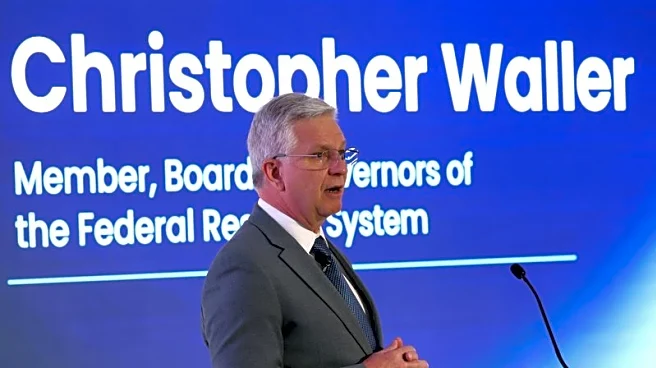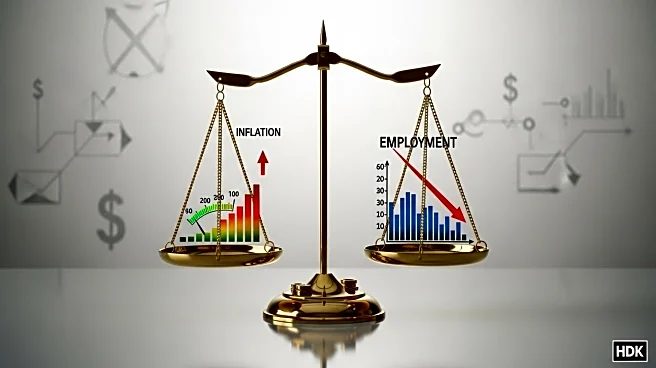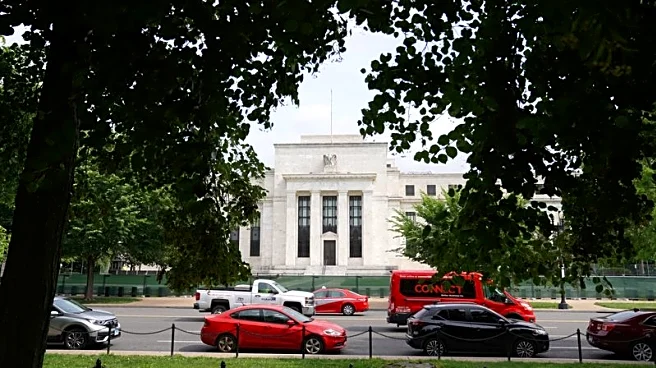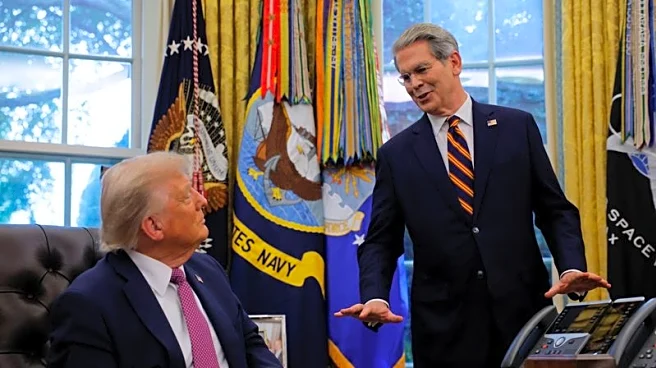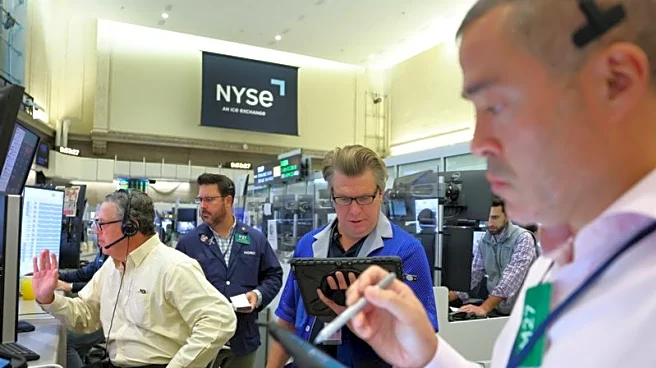What's Happening?
Federal Reserve Governors Stephen Miran and Christopher Waller have expressed differing opinions on the appropriate size of interest rate cuts in response to a weakening labor market and geopolitical tensions.
Miran advocates for a half percentage point cut at the upcoming Federal Open Market Committee meeting, while Waller supports a quarter percentage point reduction. This debate comes as the Fed faces challenges due to a government shutdown that has hindered the release of key economic data. Waller's stance aligns more closely with the consensus among Fed officials, who are considering further rate reductions to address economic uncertainties.
Why It's Important?
The discussion on interest rate cuts is significant as it reflects the Federal Reserve's approach to managing economic stability amid fluctuating labor market conditions and inflation pressures. A decision to cut rates could stimulate economic activity by making borrowing cheaper, potentially benefiting businesses and consumers. However, the extent of the cuts remains uncertain, with potential implications for inflation control and economic growth. The Fed's actions are closely watched by investors and policymakers, as they influence financial markets and economic forecasts.
What's Next?
The Federal Open Market Committee is set to meet at the end of October to decide on the interest rate policy. The outcome of this meeting will be crucial in determining the Fed's approach to addressing economic challenges. Stakeholders, including businesses and financial institutions, will be monitoring the Fed's decision and its impact on market conditions. The Fed's ability to balance inflation control with economic growth will be a key focus in the coming months.
Beyond the Headlines
The ongoing debate within the Federal Reserve highlights the complexities of monetary policy in a dynamic economic environment. The Fed's decision-making process involves weighing various economic indicators, including GDP growth and labor market trends, against inflationary pressures. This situation underscores the importance of adaptive policy measures in maintaining economic stability.






